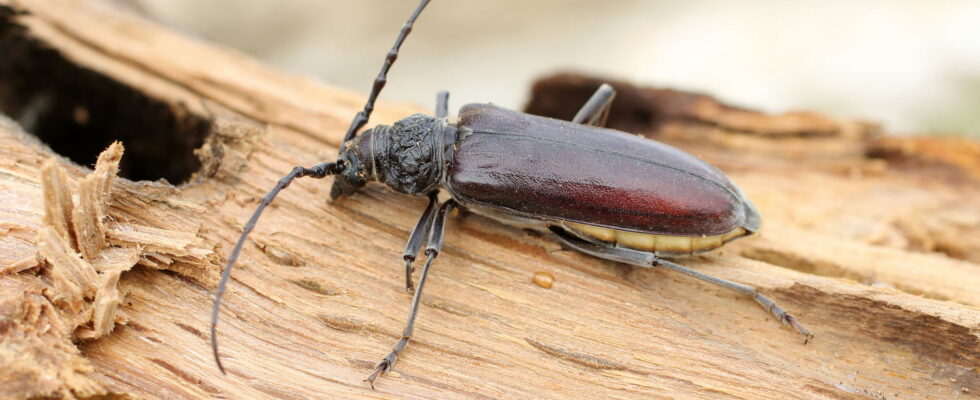If you see this beast in your home, the entire structure of your house is in danger!
While some insects in the house bother us because they bite or are dirty, such as mosquitoes, flies or cockroaches, others can cause a lot of damage to homes. We are well aware of termites, small creatures that are fond of wood in homes (flooring, door frames and roof frames), but this is not the only insect that represents a real scourge for your home if you do not take care of it quickly. Less well known, the house longhorn beetle, is also something to watch out for.
The house longhorn beetle, a small, discreet but formidable beetle, is a real nightmare for homeowners. This insect, from the xylophagous family, feeds on wood and can cause considerable damage to the frames and other wooden structures of your home. If you find it in your home, it is crucial to react quickly to avoid serious problems.
It measures between 8 and 25 millimeters and is distinguished by its elongated, brown-black body and its relatively long antennae. The larvae, for their part, are white, cylindrical and can reach up to 30 millimeters long. They are responsible for the most significant damage, as they are the ones that dig galleries inside the wood to feed.

The life cycle of the house longhorn beetle begins with the laying of eggs in cracks or cavities in the wood. Once the eggs hatch, the larvae burrow deep into the wood where they remain active for several years, sometimes up to 10 years, before transforming into adult insects. This long life cycle means that damage can become significant before the infestation is even noticed.
The main danger posed by the house longhorn beetle is the structural damage it can cause. The tunnels dug by the larvae weaken the wood, which can compromise the integrity of the frame and other wooden elements of your home. Wooden beams, floors and walls are all at risk. If left untreated, a severe infestation can make your home uninhabitable.
If you have discovered one of these little creatures in your home, or if you suspect its presence, it is essential to act without delay. The first step is to call a professional to confirm the infestation. They will be able to determine the extent of the damage and propose an appropriate treatment plan.
Treatment methods vary depending on the severity of the infestation. They may include the application of insecticides, heat treatment or even injecting resin into the galleries to seal them. In the most severe cases, it may be necessary to replace the damaged timbers.
To prevent an infestation, it is recommended to preventatively treat exposed wood with specially designed insecticide products. Also, be sure to limit humidity in your home, as it encourages the development of wood-eating insects. Finally, regularly inspect wooden structures for any signs of suspicious activity, such as holes in the wood or scratching noises.
